ICD-11:
Classifying disease to map the way we live and die
Coding disease and death
There are few truer snapshots of a country’s wellbeing than its health statistics. While broad economic indicators such as Gross Domestic Product may skew impressions of individual prosperity, data on disease and death reveal how a population is truly faring.
The International Statistical Classification of Diseases and Related Health Problems (ICD)
is the bedrock for health statistics. It maps the human condition from
birth to death: any injury or disease we encounter in life − and
anything we might die of − is coded.
Not only that, the ICD
also captures factors influencing health, or external causes of
mortality and morbidity, providing a holistic look at every aspect of
life that can affect health.
These
health statistics form the basis for almost every decision made
in health care today − understanding what people get sick from, and what
eventually kills them, is at the core of mapping disease trends and
epidemics, deciding how to programme health services, allocate health
care spending, and invest in R&D.
ICD codes can have
enormous financial importance, since they are used to determine where
best to invest increasingly scant resources. In countries such as the
USA, meanwhile, ICD codes are the foundation of health insurance
billing, and thus critically tied up with health care finances.
Why is the ICD important? Watch our video



Crucially, in a world of 7.4 billion people
speaking nearly 7000 languages, the ICD provides a common vocabulary for
recording, reporting and monitoring health problems. Fifty years ago,
it would be unlikely that a disease such as schizophrenia would be
diagnosed similarly in Japan, Kenya and Brazil. Now, however, if a
doctor in another country cannot read a person’s medical records, they
will know what the ICD code means.
Without the ICD’s ability to
provide standardized, consistent data, each country or region would have
its own classifications that would most likely only be relevant where
it is used. Standardization is the key that unlocks global health data
analysis.
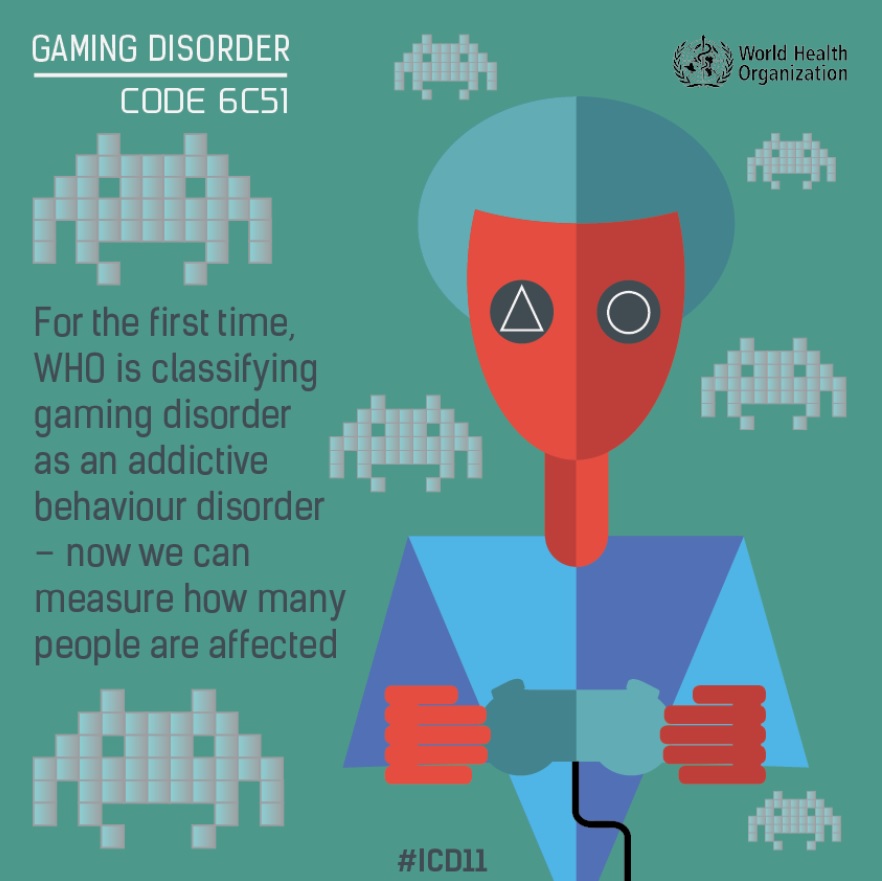
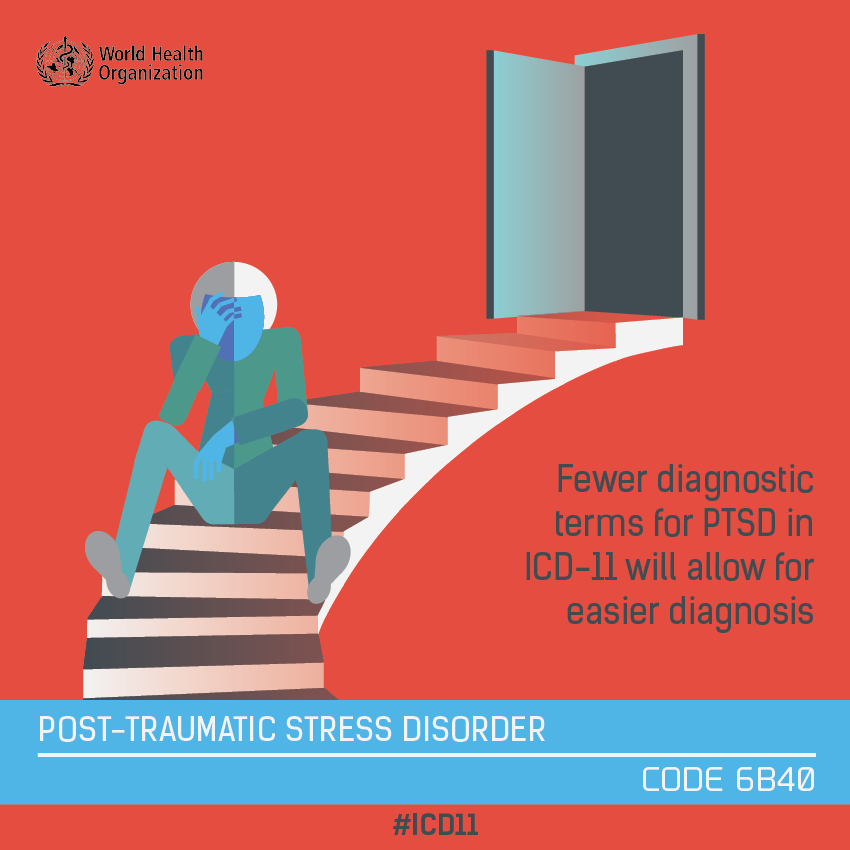
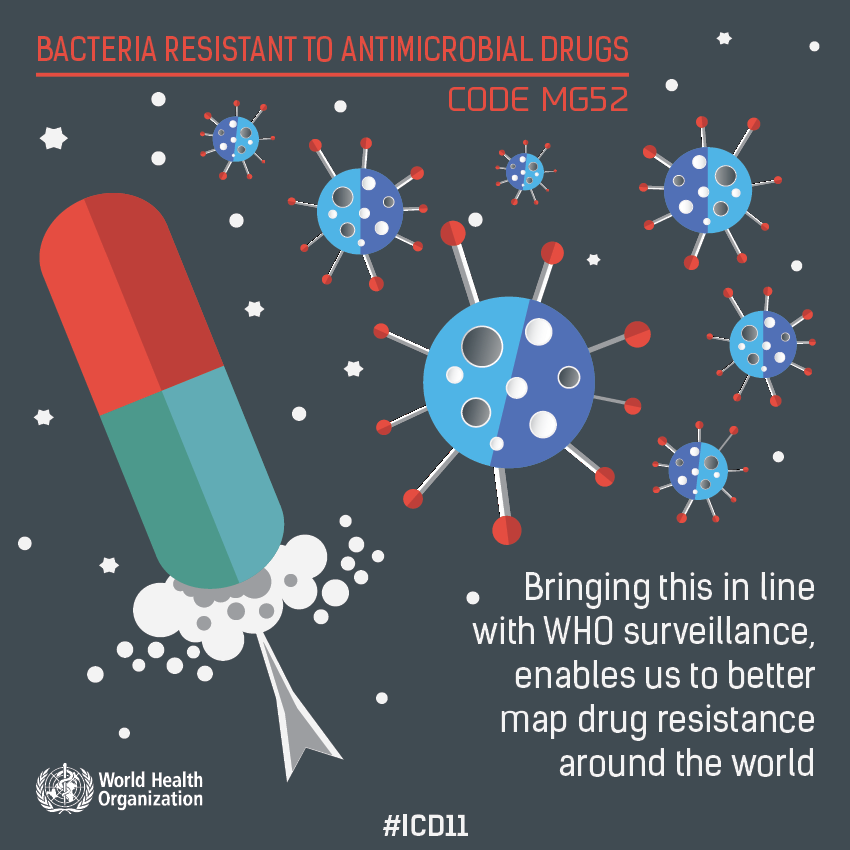
Ready for the 21st century
First, it has been updated for the 21st century and reflects critical advances in science and medicine. Second, it can now be well integrated with electronic health applications and information systems. This new version is fully electronic, significantly easier to implement which will lead to fewer mistakes, allows more detail to be recorded, all of which will make the tool much more accessible, particularly for low-resource settings.
A third, important feature is that ICD-11 has been produced through a transparent, collaborative manner, the scope of which is unprecedented in its history (see Box: The revision process). The complexity of the ICD has sometimes made it seem like an esoteric health tool requiring months of training – of the number of deaths reported in the world, those coded correctly were about one third. An overriding motive in this revision was to make the ICD easier to use (see Box: Making the switch).

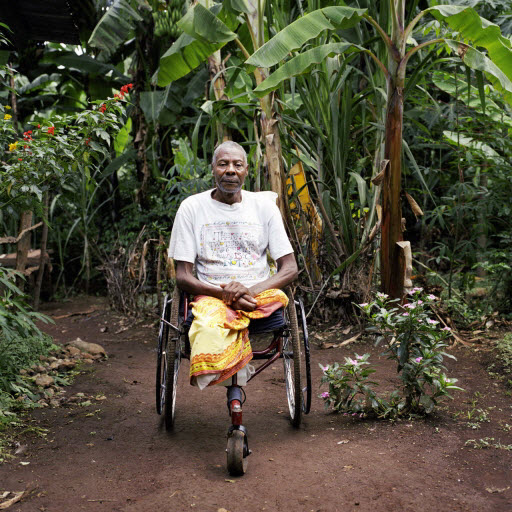

Small code, big impact
For instance, some people working on stroke have long been pushing for it to be moved from circulatory diseases, where it has been for 6 decades, into neurological disease, where it now sits in ICD-11. Those advocating for the move cited key implications for treating the disease and reporting deaths as the main driver.
A critical point in engaging with the ICD is that inclusion or exclusion is not a judgement on the validity of a condition or the efficacy of treatment. Thus, the inclusion for the first time of traditional medicine is a way of recording epidemiological data about disorders described in ancient Chinese medicine, commonly used in China, Japan, Korea, and other parts of the world. Revisions in inclusions of sexual health conditions are sometimes made when medical evidence does not back up cultural assumptions. For instance, ICD-6 published in 1948 classified homosexuality as a mental disorder, under the assumption that this supposed deviation from the norm reflected a personality disorder; homosexuality was later removed from the ICD and other disease classification systems in the 1970s.
Overview of ICD-11
Gender incongruence
Mental health
Gender incongruence, meanwhile, has also been
moved out of mental disorders in the ICD, into sexual health conditions.
The rationale being that while evidence is now clear that it is not a
mental disorder, and indeed classifying it in this can cause enormous
stigma for people who are transgender, there remain significant health
care needs that can best be met if the condition is coded under the ICD.
For
mental health conditions, ICD codes are especially important since the
ICD is a diagnostic tool, and thus, these are the conditions that often
garner much of the interest in the ICD. These include gaming disorder,
which evidence shows is enough of a health problem that it requires
tracking through the ICD. Other addictive behaviours such as hoarding
disorder are now included in ICD-11, and conditions such as ‘excessive
sexual drive’ has been reclassified as ‘compulsive sexual behaviour
disorder’.
A significant change in the mental disorders section
of ICD-11 is the attempt of statisticians to simplify the codes as much
as possible to allow for coding of mental health conditions by primary
health care providers rather than by mental health specialists. This
will be a critical move since the world still has a scarcity of mental
health specialist – up to 9 out of 10 people needing mental health care
don’t receive it.
History of the ICD
The history of the ICD traces back to England in the 16th
century. Every week, the London Bills of Mortality would announce deaths
from distinctly medieval causes: scurvy, leprosy, and the big killer –
plague.
It wasn’t until the late 19th century though, when
Florence Nightingale, just returned from the Crimean War, advocated for
the need for gathering statistics on causes of disease and death that
data began to be collected more systematically.
Around the same
time French statistician Jacques Bertillon introduced the Bertillon
Classification of Causes of Death, which was adopted by several
countries.
In the 1940s, the World Health Organization took over
Bertillon’s system and expanded it to include statistics on causes of
injury and disease, producing the first version of the International
Statistical Classification of Diseases, Injuries and Causes of Death
(ICD). This allowed for the first time the collection of both morbidity
and mortality data to map both disease trends and causes of death.
Disease trends and the biggest killers
The data captured through ICD codes is of huge importance
for countries. It allows for the mapping of disease trends and causes of
death around the world, which are key indicators both of the health of a
population, but also the social determinants that link closely to
health, such as the education, nutrition, and public infrastructure - in
short, a snapshot of where a country’s vulnerabilities lie.
A
country in which people live in crowded, inadequate housing with no
clean water are inevitably likely to have a higher incidence of
diarrhoeal disease.
The Global Health Observatory is
WHO’s gateway to health-related statistics for over 1000 indicators.
Data coded through the ICD populates the Global Health Observatory
allowing WHO to report World Health Statistics annually.
These statistics are critical in tracking progress towards key targets such as the Sustainable Development Goals.

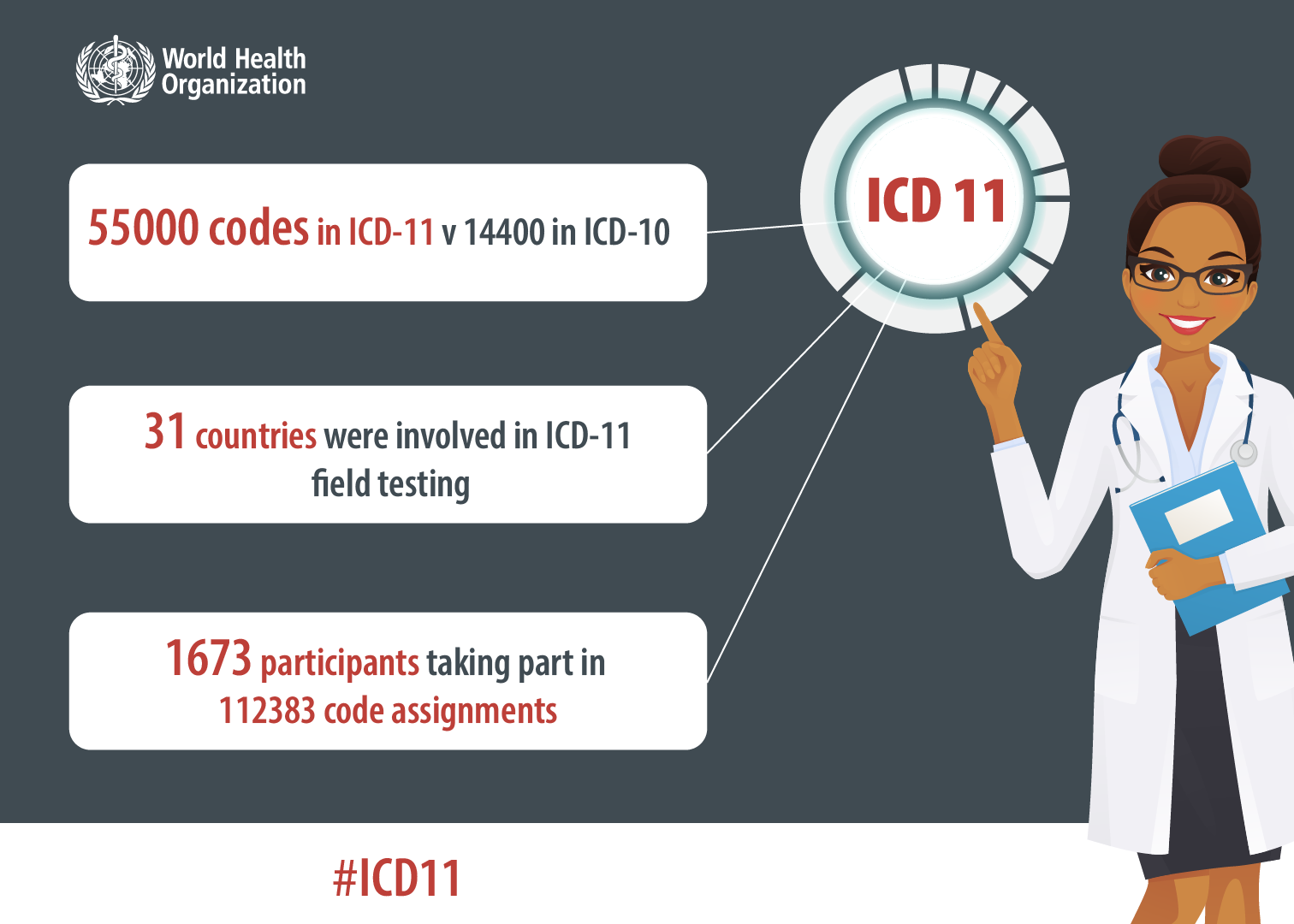
Mortality data in the Global Health Observatory shows that while ischaemic heart disease and stroke are the top two killers worldwide, together accounting for 15 million deaths in 2015, zooming into the statistics by continent can show radically different pictures.
In Africa, lower respiratory infections and HIV/AIDS cause the most deaths, whereas violence is in the top 10 causes of death in the Region of the Americas and the Eastern Mediterranean region.
Data clearly has huge significance in directing energy and resources in global health. Yet data also shows us a picture of what is happening in the world that is unhampered by bias or assumption.
For instance, data from the WHO’s 2018 World Health Statistics on global deaths on homicide and conflict show that the statistics do not always match the way these mortality data are reported in the media, for instance (see graphic: Why data is important)
Why data is important
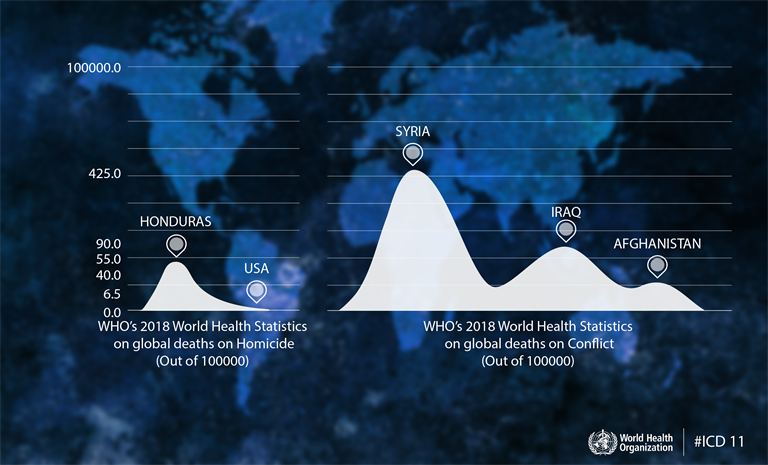
What shelf life will ICD-11 have?
Countries that create bespoke versions can then sell those to other countries, training them in its use. Practitioners of specialities such as dermatology or mental health may want to produce their own adaptations too.
As WHO tweaks the ICD through the years to take into account new understandings of medicine, countries are expected to follow suit. Many do not, however.
Every year, WHO takes slightly incompatible data from countries and makes them comparable.
Over the years though, version control slips too far and several slightly varying versions appear all over the world. Thus, a new version becomes necessary to reset the system.
ICD-11, however, has been produced electronically and therefore should act more as a living document to which everyone has access. Its agility should ensure considerable longevity.














